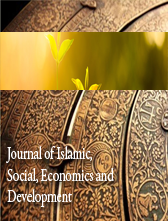THE EFFECT OF GAS STIMULANT APPLICATION AND LENGTH OF S4 TAPING GROUND ON THE PHYSIOLOGY AND PRODUCTION OF LATEX IN RUBBER (HEVEA BRASILIENSIS MUELL) CLONE PB 260
Abstract
Rubber plants with PB 260 clones are clones that have high productivity potential because they are classified as quick starter clones but their productivity will decrease when they reach the age of 10 years as well as their latex physiology. The research was conducted at PT.Perkebunan Nusantara III Kebun Bandar Betsy, Bandar Huluan II District, Simalungun Regency, North Sumatra with an altitude of 900 meters above sea level and ultisol soil type. Physiological analysis was carried out at the Laboratory of PT. Socfin Indonesia (Socfindo). This research started from January to July 2020. The aim of the study was to determine the physiological effect and yield of latex production on the length of the quarter-spiral tapping groove (S4) and the application of gas stimulants in the Clone PB 260 rubber plant. The research method used a Non-factorial Randomized Group Design with three replications and as an exploitation system treatment with two levels S0G1=S4d4 (Control) and S1G1=S4d4 ETG30d. The results showed that the latex yield in the S1G1=S4d4 ETG30d treatment had a higher latex yield compared to the S0G1=S4d4 treatment (Control). The results of physiological analysis of latex, namely sucrose, Pi, and thiol in the S0G1 and S1G1= S4 d4 ETG30d treatments on rubber clone PB260 showed no difference. In general, the use of stimulant gas S1G1=S4 d4 ETG30d affects the increase in latex yield.













